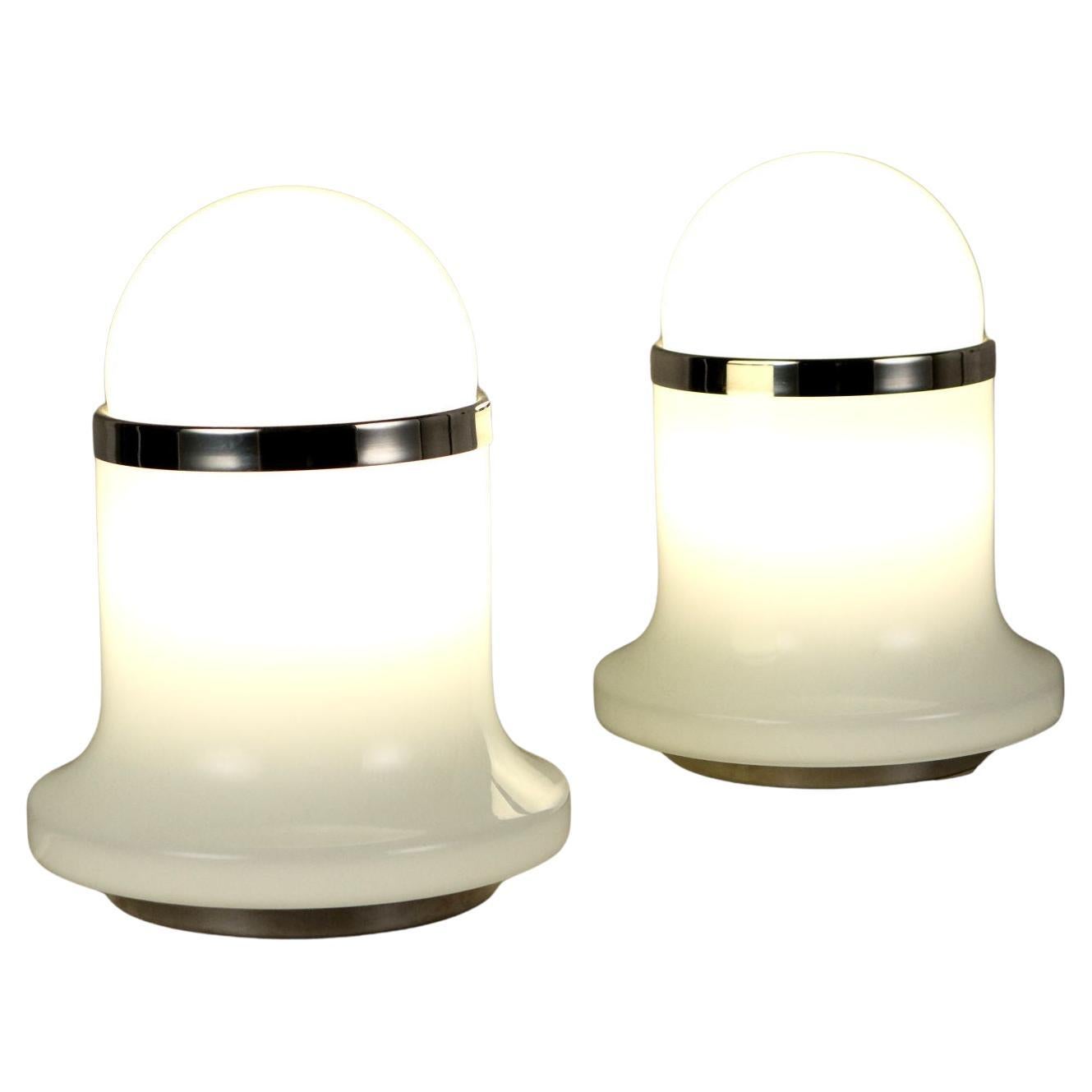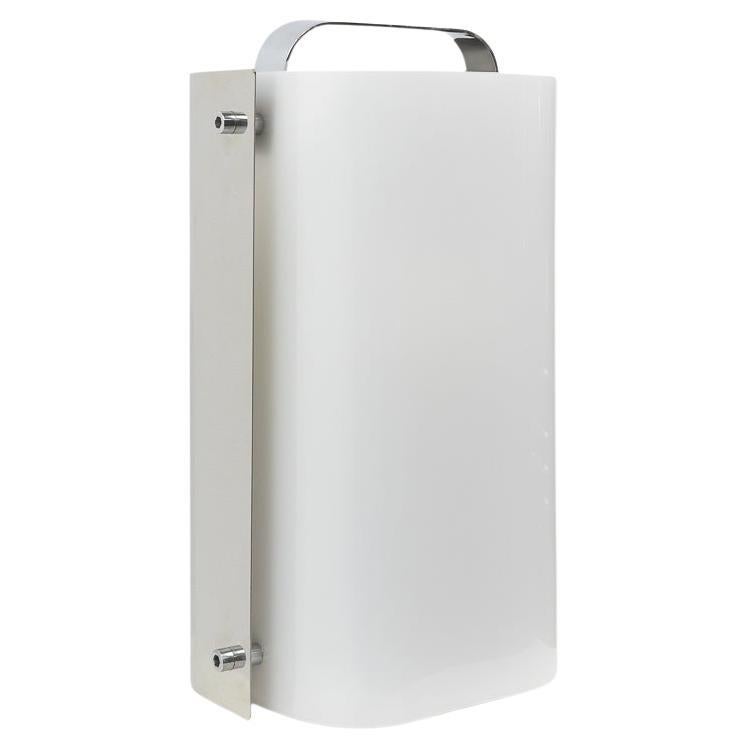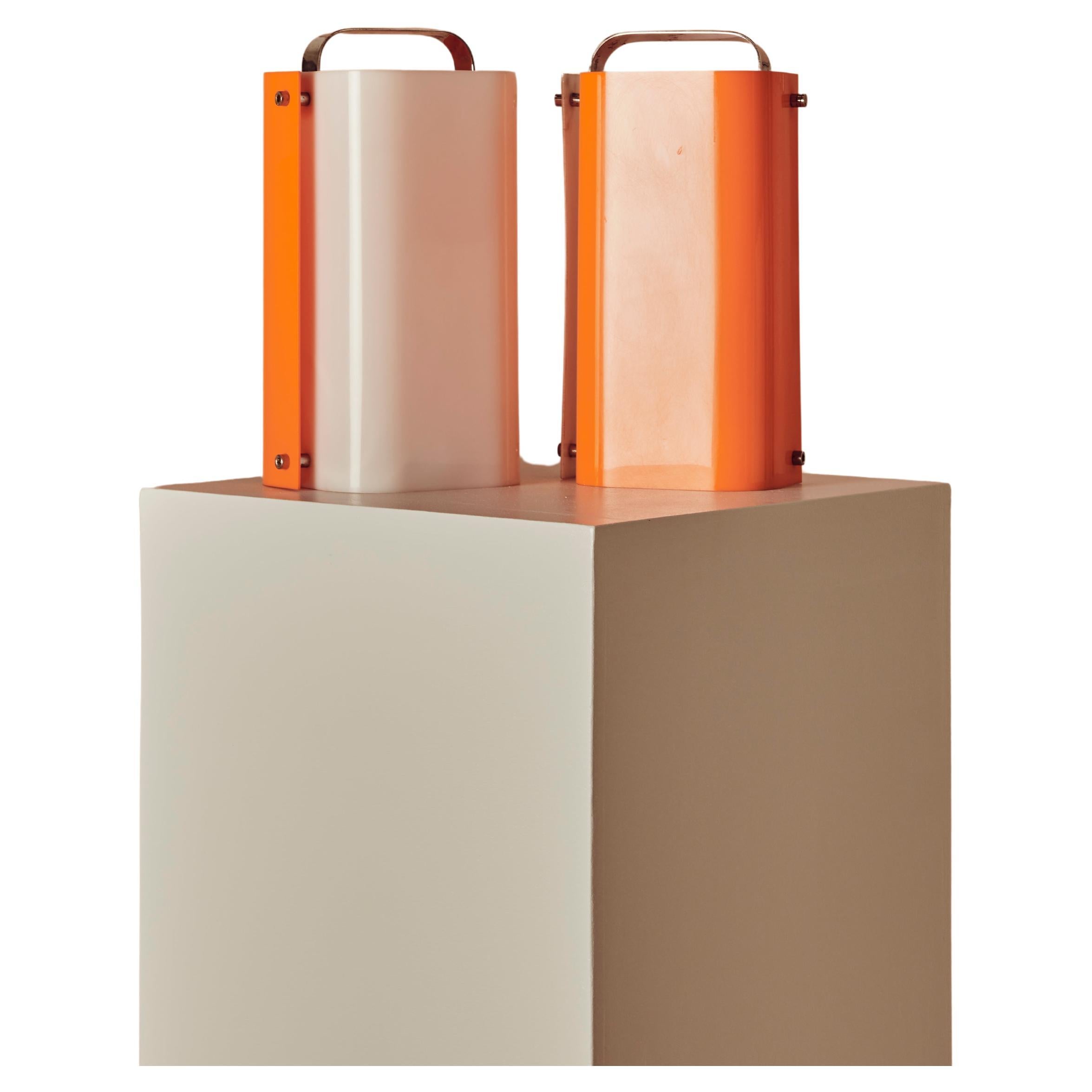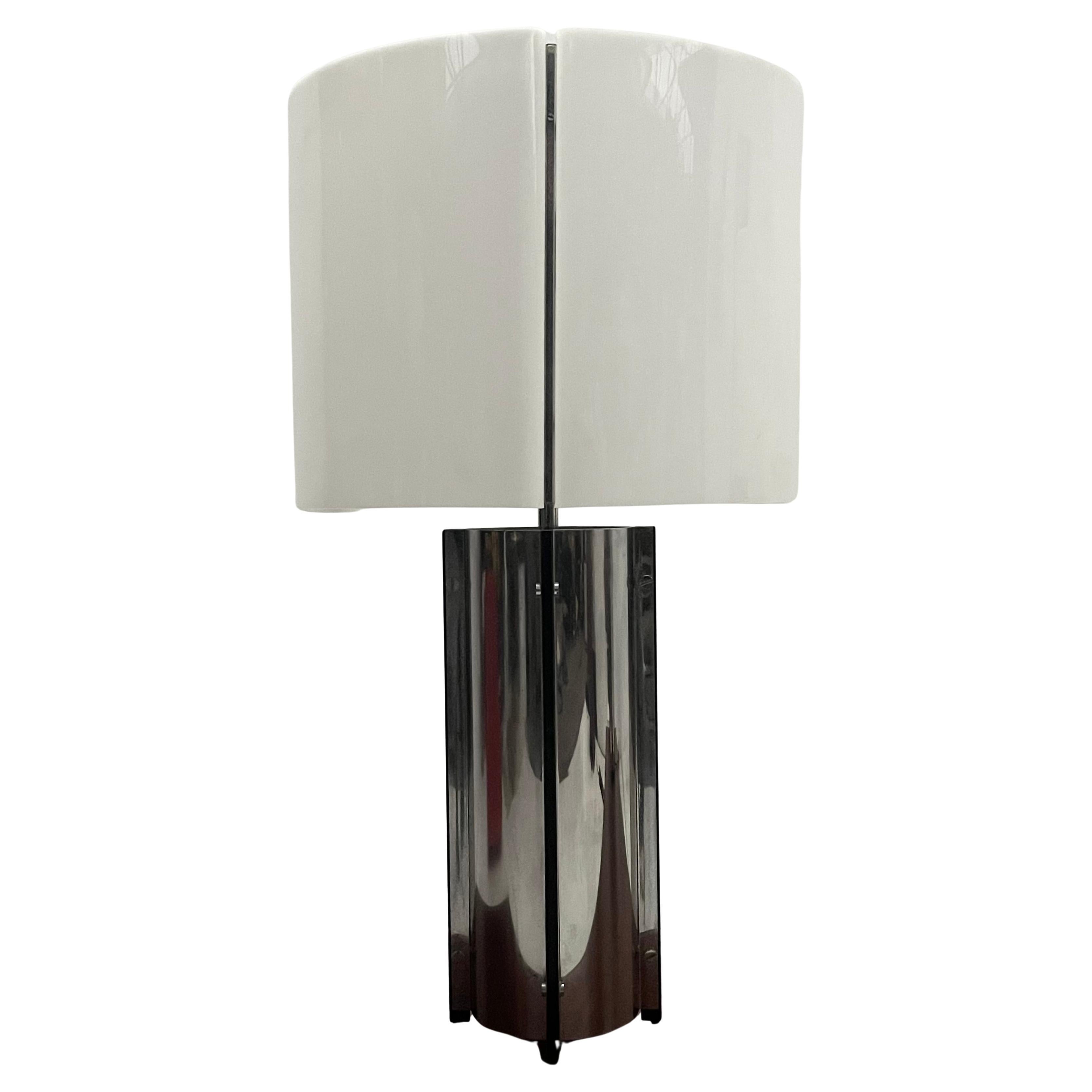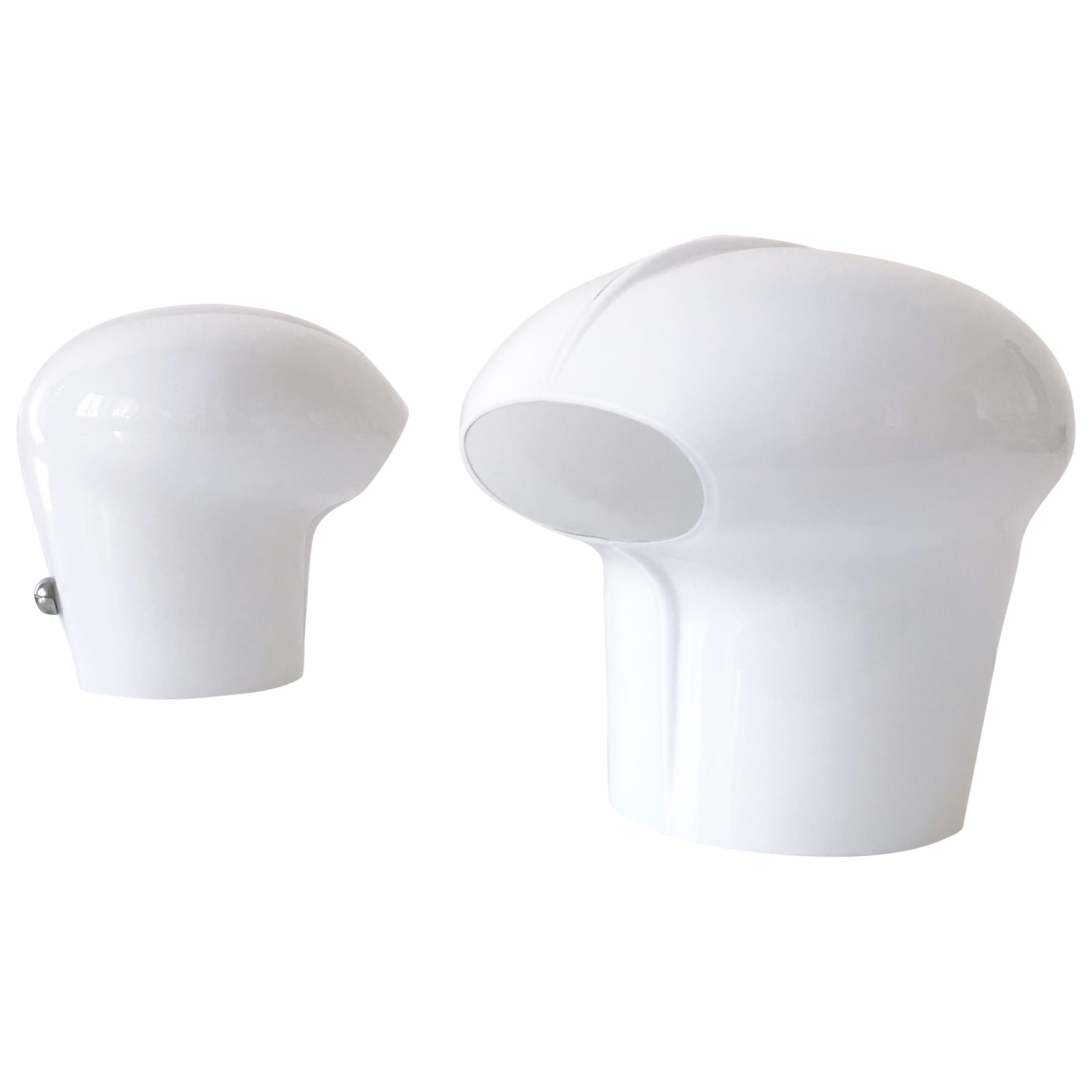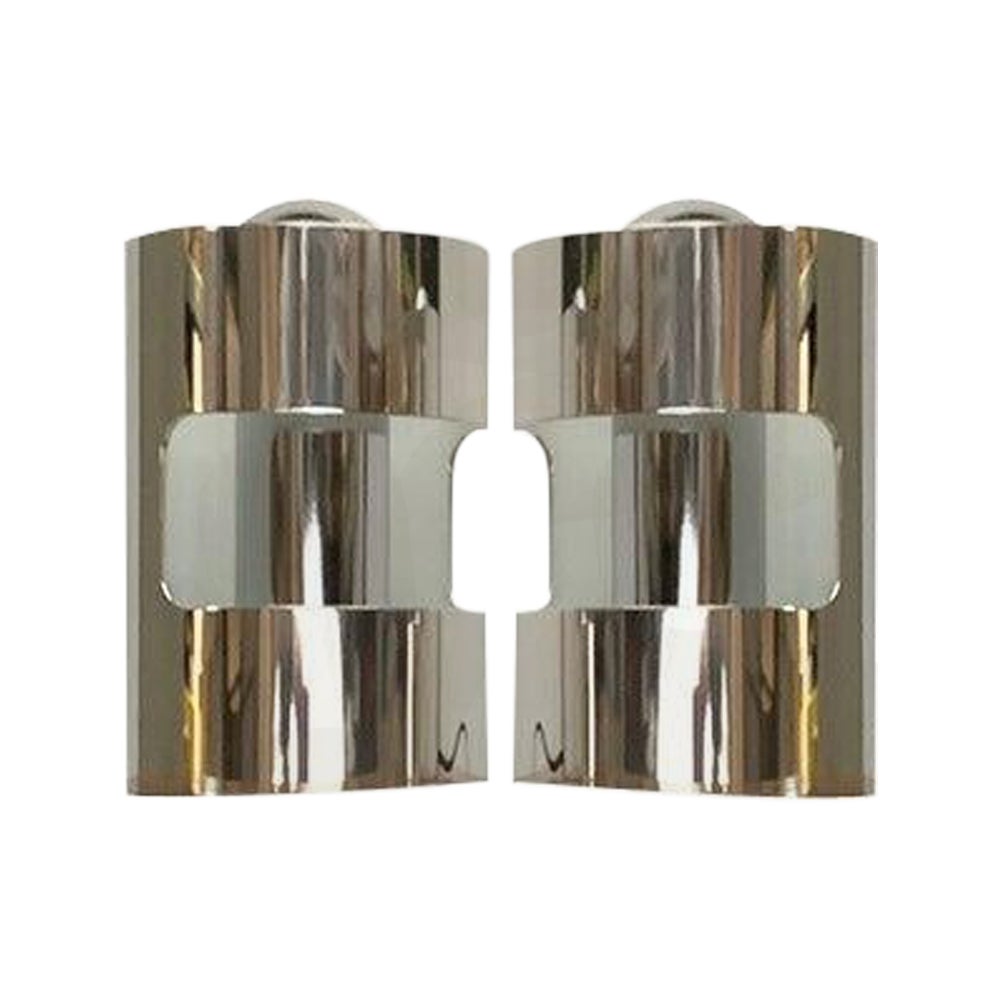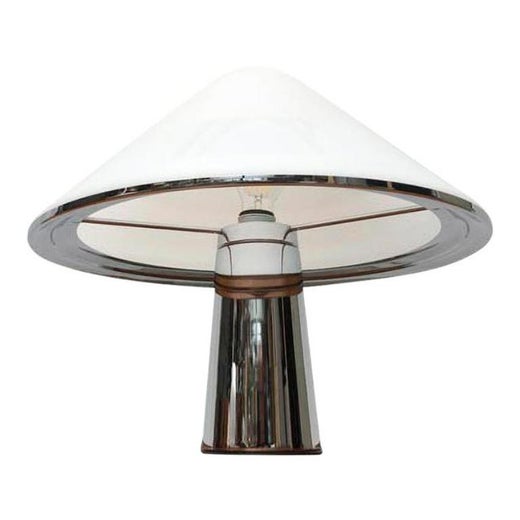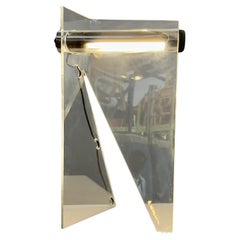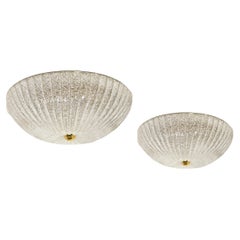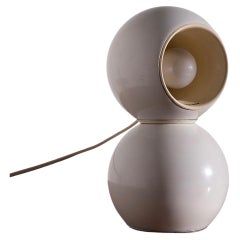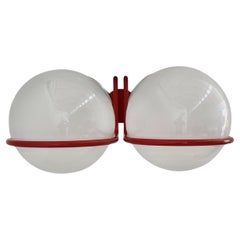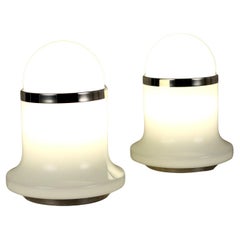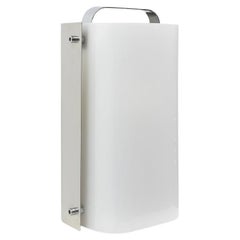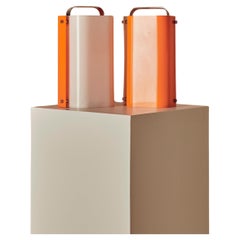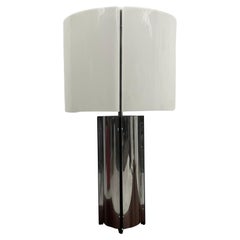Coppia Lampade da tavolo Polsino
About the Item
- Creator:Harvey Guzzini (Manufacturer),Gio Ponti (Designer)
- Dimensions:Height: 15.24 in (38.7 cm)Width: 8.51 in (21.6 cm)Depth: 6.5 in (16.5 cm)
- Sold As:Set of 2
- Power Source:Hardwired
- Voltage:220-240v
- Style:Mid-Century Modern (Of the Period)
- Materials and Techniques:
- Place of Origin:
- Period:
- Date of Manufacture:1960s
- Condition:Wear consistent with age and use.
- Seller Location:Baranzate, IT
- Reference Number:1stDibs: LU8654239101182
Gio Ponti
An architect, furniture and industrial designer and editor, Gio Ponti was arguably the most influential figure in 20th-century Italian modernism.
Ponti designed thousands of furnishings and products — from cabinets, mirrors and chairs to ceramics and coffeemakers — and his buildings, including the brawny Pirelli Tower (1956) in his native Milan, and the castle-like Denver Art Museum (1971), were erected in 14 countries. Through Domus, the magazine he founded in 1928, Ponti brought attention to virtually every significant movement and creator in the spheres of modern art and design.
The questing intelligence Ponti brought to Domus is reflected in his work: as protean as he was prolific, Ponti’s style can’t be pegged to a specific genre.
In the 1920s, as artistic director for the Tuscan porcelain maker Richard Ginori, he fused old and new; his ceramic forms were modern, but decorated with motifs from Roman antiquity. In pre-war Italy, modernist design was encouraged, and after the conflict, Ponti — along with designers such as Carlo Mollino, Franco Albini, Marco Zanuso — found a receptive audience for their novel, idiosyncratic work. Ponti’s typical furniture forms from the period, such as the wedge-shaped Distex chair, are simple, gently angular, and colorful; equally elegant and functional. In the 1960s and ’70s, Ponti’s style evolved again as he explored biomorphic shapes, and embraced the expressive, experimental designs of Ettore Sottsass Jr., Joe Colombo and others.
Ponti's signature furniture piece — the one by which he is represented in the collections of the Museum of Modern Art in New York, Germany’s Vitra Design Museum and elsewhere — is the sleek Superleggera chair, produced by Cassina starting in 1957. (The name translates as “superlightweight” — advertisements featured a model lifting it with one finger.)
Ponti had a playful side, best shown in a collaboration he began in the late 1940s with the graphic artist Piero Fornasetti. Ponti furnishings were decorated with bright finishes and Fornasetti's whimsical lithographic transfer prints of things such as butterflies, birds or flowers; the Montreal Museum of Fine Arts possesses a 1950 secretary from their Architetturra series, which feature case pieces covered in images of building interiors and facades. The grandest project Ponti and Fornasetti undertook, however, lies on the floor of the Atlantic Ocean: the interiors of the luxury liner Andrea Doria, which sank in 1956.
Widely praised retrospectives at the Queens Museum of Art in 2001 and at the Design Museum London in 2002 sparked a renewed interest in Ponti among modern design aficionados. (Marco Romanelli’s monograph, which was written for the London show, offers a fine overview of Ponti’s work.) Today, a wide array of Ponti’s designs are snapped up by savvy collectors who want to give their homes a touch of Italian panache and effortless chic.
Find a range of vintage Gio Ponti desks, dining chairs, coffee tables and other furniture on 1stDibs.
Harvey Guzzini
Harvey Guzzini may sound like a single designer, but it was actually a mid-century Italian lighting company started by six brothers in the Guzzini family: Giovanni, Raimondo, Giuseppe, Adolfo, Virgilio and Giannunzio. The first part of the name was an homage to the 1950 film Harvey. Compounding the historical record even further, it seems that the Guzzini company rebranded many times in the 20th century, going by, at various points, Harvey Creazioni, Guzzini, Illuminazione Guzzini and iGuzzini.
The Harvey Guzzini brand produced a range of fixtures during the postwar years, including table lamps, floor lamps and pendant lights.
Harvey Guzzini was founded in 1959 in a room of Giovanni's home in the town of Recanati. Initially, the company was focused on making copper decorative objects. The brothers quickly established their own studio space and, in 1963, they expanded into lighting production. The following year, they hired prolific Italian designer Luigi Massoni as head of design. In addition to Harvey Guzzini, Massoni was involved with many of Italy’s most influential brands, such as Poltrona Frau and Alessi.
Another key to the growing success of Harvey Guzzini was partnerships with a number of Italy's most prominent designers, including Gio Ponti, Fabio Lenci, Rodolfo Bonetto, Cesare Casati and Ennio Lucini.
From 1967 to 1968, Harvey Guzzini also participated in “Domus: Formes Italiennes,” an exhibition held at the Galeries Lafayette in Paris. By 1969, the company had grown into one of the best-known design firms in the country and opened a retail outlet in central Milan. Famous Harvey Guzzini designs include Massoni and Luciano Buttura's Mushroom table lamp (1965) as well as the in-house designed Arc floor lamp (1968), Faro table lamp (1970) and Toledo table lamp (1973).
In 1974, Harvey Guzzini rebranded as iGuzzini. The company introduced a range of new and technically advanced lighting fixtures, including low-voltage halogen lamps. In 1977, iGuzzini organized the first Italian lighting design conference. In 1991, it was awarded the Compasso d'Oro for its commitment to design.
Today, iGuzzini remains headquartered in Recanati and is a leading international architectural lighting group with a rich heritage spanning more than six decades since its early days as Harvey Guzzini. The company creates lighting fixtures for workplaces, city infrastructure and even cultural heritage sites.
On 1stDibs, find a collection of vintage Harvey Guzzini table lamps, floor lamps and other lighting.
- ShippingRetrieving quote...Shipping from: Rozzano, Italy
- Return Policy
More From This Seller
View AllVintage 1970s Italian Table Lamps
Plastic
Vintage 1950s Italian Mid-Century Modern Wall Lights and Sconces
Murano Glass
Vintage 1960s Italian Mid-Century Modern Table Lamps
Metal
Vintage 1960s Wall Lights and Sconces
Metal, Brass
Vintage 1960s Wall Lights and Sconces
Metal, Brass
Vintage 1950s Italian Mid-Century Modern Floor Lamps
Metal
You May Also Like
Vintage 1960s Italian Mid-Century Modern Table Lamps
Metal
Vintage 1960s Italian Mid-Century Modern Table Lamps
Aluminum, Steel
Vintage 1960s Table Lamps
Steel
Vintage 1970s Italian Mid-Century Modern Table Lamps
Chrome
Vintage 1970s Italian Mid-Century Modern Table Lamps
Murano Glass
20th Century Italian Mid-Century Modern Table Lamps
Metal
Read More
Billy Cotton Layers His Interiors with Lived-In Comfort
The Brooklyn-based designer is adept at styles ranging from austere to over-the-top, espousing an architectural, detail-oriented approach also evident in his line of furniture and lighting.
Italian Design Legend Giò Ponti Makes a Splash in Paris
A blockbuster exhibition at the Musée des Arts Décoratifs shows the work of the modernist master in a brilliant new light.
